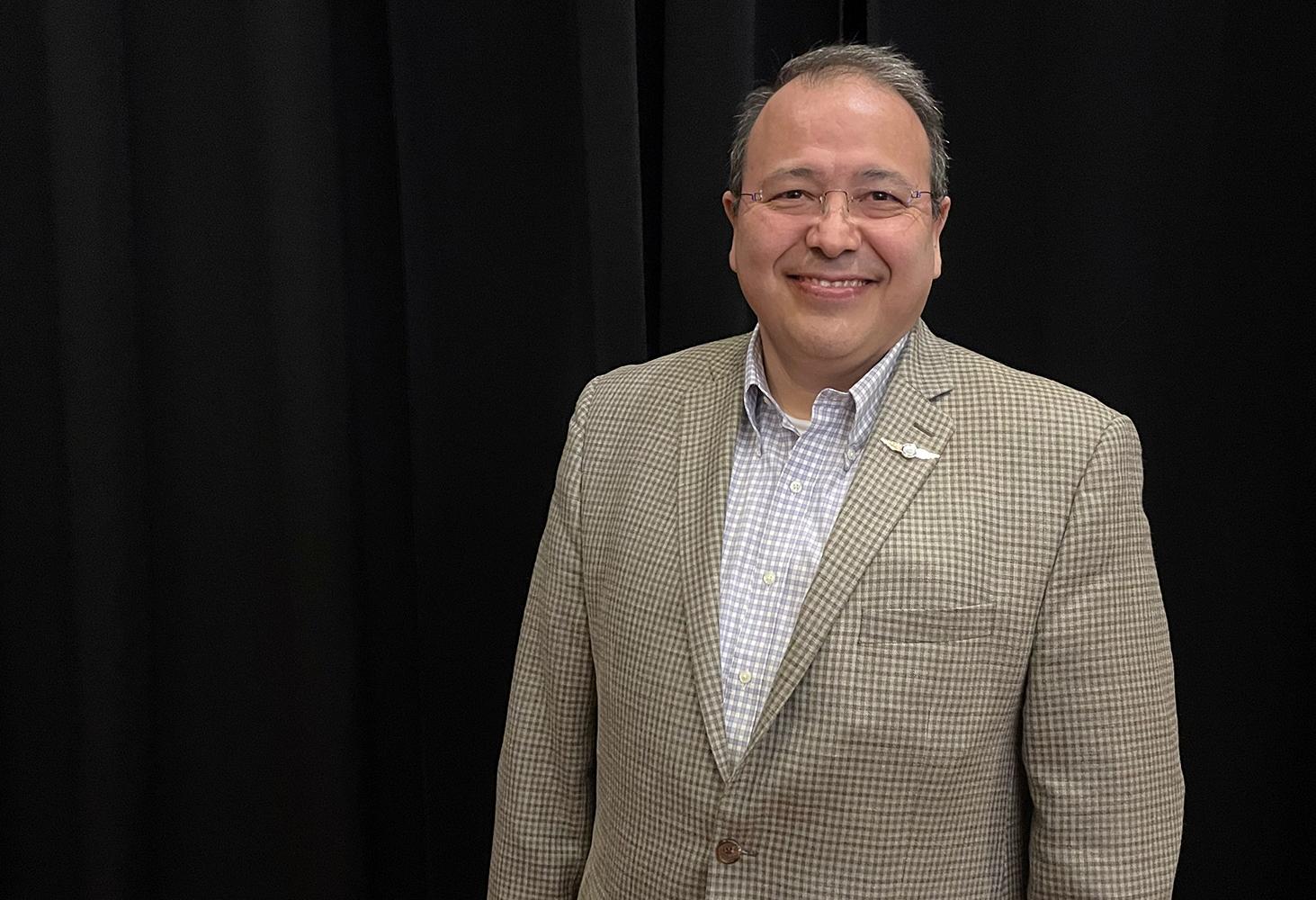Fast 5: Global Engine Maintenance Expands In-House Capabilities

Julio Ramirez, vice president of sales and customer support, Global Engine Maintenance
Julio Ramirez, vice president of sales and customer support at Global Engine Maintenance, spoke with Aviation Week on the sidelines of MRO Latin America in San Jose, Costa Rica about the region’s engine aftermarket trends and the company’s upcoming expansion plans. Ramirez will also be speaking at Aviation Week’s upcoming Aero-Engines Americas conference, which takes place Feb. 28-March 1 in Miami.
One of the hot topics this week at MRO Latin America has been the difficulty in setting up independent engine MRO operations in the region. What do you think are the biggest barriers?
The biggest barrier is the volume of that business. There are airlines that are big enough to justify [establishment of engine MRO services] but they would need to do that in a partnership with someone that has the technology and knows how to do it, because it takes time to ramp up an engine shop, the test cell, the internal processes and all the assembly and disassembly. The operation needs to be efficient and competitive with what the rest of the world is offering because that’s a big problem. Why would I bother implementing capability in my country if I can get a very good deal from the U.S. or Europe that might even cover me for the transportation cost? It has to be a long term [process] and with a technology partner; it could be an OEM or another MRO that is interested in building capability in the region. Because otherwise, by the time the shop becomes efficient, the airline is already transitioning into the next generation of engines.
Because of the type of jobs that a development like this generates, there is a need for local governments to support it. Some of the governments [in Latin America] do this with land, schools, training or tax incentives. But I think it has to be more decisive, because at the end of the day, the shop generates businesses around it that is positive for whatever region the shop ends up being in. It’s not impossible, but a few things need to come in line, including government support to accelerate the development.
GEM hired some technicians from Mexico to work in the U.S. What led to this workforce strategy, and what did the process entail? Do you expect to see more international MRO providers trying this strategy and, if so, what will the impacts be for Latin America’s MRO industry?
This is a possibility with agreements between Mexico, the U.S. and Canada, so you can hire specialized technicians from either country, depending on need for those technicians. An aviation technician is one of the profiles that qualifies for a work visa. We initially took advantage of [hiring] some people that were laid off during the pandemic. We tried out the process and it worked out well. We’ve so far recruited 14-15 highly trained, qualified people [from Mexico]. We have been approached by people from other countries [in Latin America], but unfortunately there is no quick path to bring them to the U.S. The only way is the traditional green card with a lottery, which is kind of difficult and time consuming.
We have seen other companies taking advantage of this possibility, but there’s a limit. We can’t bring everybody. There are technical schools producing and training more people in the region, so I think the attrition is pretty well covered there. I don’t see them having any issue or any shortage of people because we’re bringing some into the U.S.
GEM specializes in CFM56 engines, which were impacted by the AOG Technics parts scandal last year. Were you affected by this, and has that development led to any changes in the way you handle parts documentation?
Fortunately, we were not affected. We have never purchased directly or indirectly from AOG Technics. We immediately reviewed the records and we issued communication to all our customers to assure them that no engine ever repaired by GEM will contain parts from that company. We have a pretty robust quality assurance/quality control system for parts that we buy and a vendor evaluation process that we apply to all our approved vendors. Our warehouse staff are very sharp in identifying the proper documentation when we receive parts. We even run into issues with customers getting a little frustrated with us become we apply the same rules even on customer-supplied material. Because at the end of the day, we are responsible for what we put on the engine, regardless of how we got it.
The aftermarket is expecting growth in demand for CFM56 engine services over the next decade. Are you making any preparations to ramp up capacity or capability?
Yes. Starting on March 1, we’re opening the second shift. So far, we have only been working one shift. We are expanding the capabilities we have. We’re bringing in a second high-speed grinder, we’re implementing our accessory shop, we’re going to implement some repairs through plasma and we also have invested in some non-destructive testing equipment. We want to implement more repairs and inspections in-house to better control turnaround times (TAT), because right now the restriction with some vendors is that they cannot deliver.
Our footprint in Miami at some point in time will start to look a little smaller. We have another facility in Sebring, Florida. We have our first aircraft there for CFM56-3 engines and we have just rented another hangar. We are going to use that facility as a warehouse to free up shop space. Shop space in Doral is quite expensive so we want to maximize the use of that space for the repair of engines.
How has GEM been impacted by the industry’s recent supply chain issues and what strategies are you deploying to deal with this?
We have been impacted for sure. What we have been trying to do is buy a rotable pool. Every time we have an opportunity to find fan blades, LPT stage 1 nozzles or HPT blades—those complex, long-turn-time parts—we buy them and we try to keep some stock to offer better reaction time and better turn times to our customers. That supply is becoming more limited because we’re probably not the only shop trying to do that. Our other strategies include buying engines to refurbish, sell in the market and harvest for parts for our operations.





